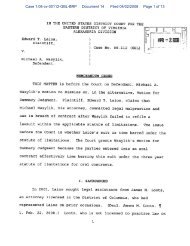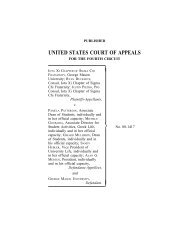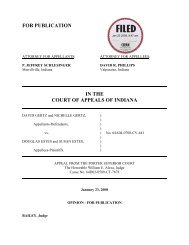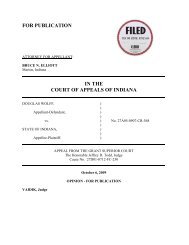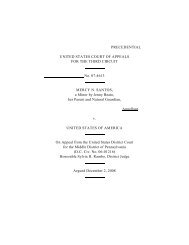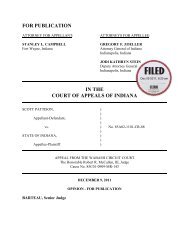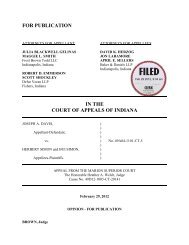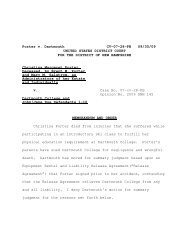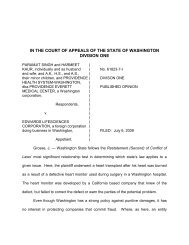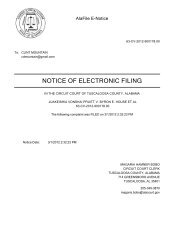IN THE COURT OF APPEAL OF THE STATE OF ... - FindLaw
IN THE COURT OF APPEAL OF THE STATE OF ... - FindLaw
IN THE COURT OF APPEAL OF THE STATE OF ... - FindLaw
You also want an ePaper? Increase the reach of your titles
YUMPU automatically turns print PDFs into web optimized ePapers that Google loves.
add a cause of action for intentional infliction of emotional distress, based on fear<br />
of cancer. She dismissed her cause of action for unfair business practices.<br />
Dee alleged that each defendant owned, managed, operated, or maintained<br />
buildings or participated in the construction or repair of buildings located at<br />
Mammoth Park Towers. According to Dee, the negligent design and construction<br />
of Mammoth Park Towers allowed excessive condensation to form on pipes and<br />
drip into the building. She also alleged that defendants failed to investigate water<br />
intrusion or repair chronic water intrusion in unit 307 and failed to properly install<br />
and maintain the air conditioner. Dee claimed that defendants fraudulently<br />
concealed “species of toxigenic, allergenic and carcinogenic fungi that had<br />
colonized and sporulated in Unit # 307 . . . .” and failed to inform her of<br />
stachybotrys when they discovered it on May 23, 2001. As a result, Dee was<br />
exposed to mold and suffered physical injury and emotional distress, including the<br />
fear of cancer. Dee further alleged that defendants created a “special risk of bodily<br />
harm to Plaintiff” because they did not move her prior to June 1, 2001, the date<br />
they opened the walls to test for mold.<br />
4. Motions In Limine<br />
Respondents filed or joined numerous motions in limine, attempting both to<br />
exclude results of tests conducted on Dee, based on People v. Kelly (1976)<br />
17 Cal.3d 24 (Kelly), 2<br />
and to exclude Dee‟s proposed expert testimony on<br />
causation, based primarily on Evidence Code section 801 (section 801). Kelly<br />
requires three prerequisites for admission of evidence obtained through a new<br />
scientific technique: (1) “proof that the technique is generally accepted as reliable<br />
in the relevant scientific community” (2) “proof that the witness testifying about<br />
2<br />
Defendants referred to the test as Kelly-Frye, but it is now referred to as the Kelly<br />
test in reference to Kelly, supra, 17 Cal.3d 24. (Roberti v. Andy’s Termite & Pest Control<br />
Inc. (2003) 113 Cal.App.4th 893, 898, fn. 4 (Roberti).)<br />
4



